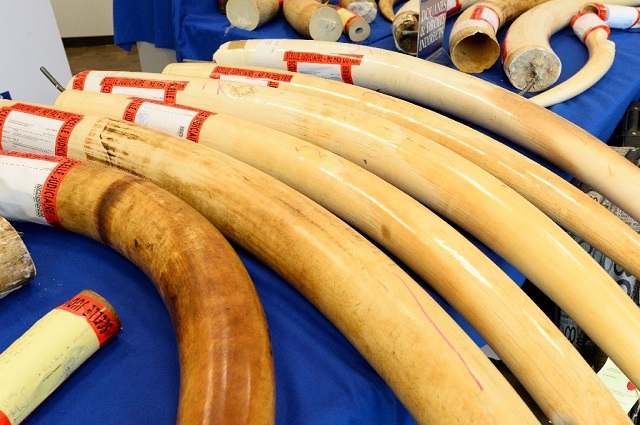EDITORIAL COMMENT: CITES should lift ban on ivory trade

ZIMBABWE and other Sadc countries are engaged in a bruising battle with animal rights activists at the ongoing 17th Conference of the Parties (COP17) to the Convention on International Trade in Endangered Species (CITES) which kicked off in South Africa at the weekend. Zimbabwe, Botswana, Namibia and South Africa want to be allowed to resume ivory trading to beef up their conservation budgets while conservation groups such as the World Wildlife Fund are leading a strong lobby to keep the ban in place.
According to a CITES statement, parties will be considering 62 proposals to increase or decrease controls on international trade in wildlife and wildlife products during the conference at the Sandton Convention Centre. Proposals have been submitted by 64 parties from around the world and in total, close to 500 species may be affected by these proposed changes.
Among the species involved are the African elephant, white rhinoceros, lion, pangolins, silky and thresher sharks, devil rays, as well as many species of rosewood, crocodiles, birds, frogs, lizards, turtles and other animals and plants. But it is the African elephant and lions that are of major concern to Zimbabwe and its neighbours in the Sadc region.
These countries face a mammoth task of winning at least a two-thirds majority to advance their proposal to trade in ivory. Zimbabwe and its neighbours are on edge and have been conducting spirited campaigns to advance their arguments with Environment, Water and Climate Minister Oppah Muchinguri-Kashiri leading a strong Zimbabwean contingent at COP 17.
Addressing the media at the weekend, Minister Muchinguri-Kashiri rubbished western proposals aimed at influencing CITES to effect a blanket restriction on the commercial trade of wildlife, saying the proposal smacks of imperialistic tendencies that seek to undermine the sovereignty of African states. She noted that it was sad that some western powers were failing to appreciate sustainable use of wildlife as a key pillar to successful conservation methods.
“In this regard, proposals that have been put forward by some member states that seek to restrict international trade in wildlife such as the African elephant and African lion defeat this noble conservation method. The proposals fail to take into consideration the important role that communities play in wildlife conservation,” Minister Muchinguri-Kashiri said.
She added: “Some of the proposals tabled here at COP 17 seek to close domestic markets for ivory trade. This proposal is a clear infringement on the sovereign rights of nations. Domestic trade of wildlife species is outside the scope of the convention and should remain as such.
“The preamble of the CITES Convention recognises that ‘Member States are and should be the best protectors of their own wild flora and fauna’. The principles of the convention should therefore be the overarching guideline in submitting proposals at CITES COPs.”
Minister Muchinguri-Kashiri warned that should CITES rubber stamp the proposal, a calamity awaited members states with the largest populations of the African elephants.
“Communities need to continue realising benefits from sustainable wildlife management. Without meaningful benefits accruing to communities from wildlife utilisation and management, communities have little reason to protect and conserve wildlife. As such this may put the species that we wish to protect under severe stress from poaching and their survival will no longer be ensured,” said the Minister.
We agree with the Minister that Zimbabwe should be allowed to benefit from its natural resources. Communities that live with problem animals are bearing the brunt of human-wildlife conflict and we feel it is only fair that they benefit from sustainable utilisation of resources. In this regard, we urge the conference of parties to CITES to allow reason and not emotions to guide them as they deliberate on this issue.
They should take cognisance of the fact that Southern Africa has two thirds of the elephant population in Africa and Zimbabwe alone has 83 000 elephants within its ecosystems. Lions and rhino populations in Southern Africa are also steady and growing in some areas and this is a clear indication that Zimbabwe and other Sadc countries have successfully protected and conserved their wildlife resources.
Zimbabwe and a few other Sadc countries are sitting on tonnes of ivory which they cannot dispose owing to a CITES ban. Zimbabwe has 96 000 tonnes estimated to be worth close to $100 million and this stockpile should be disposed and the money channelled to conservation efforts.










Comments